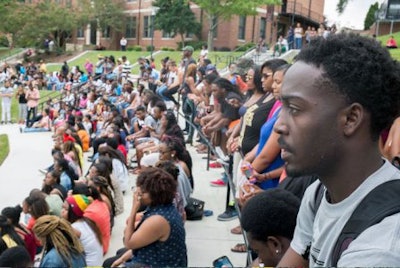
Particularly, on historically Black campuses, the female-to-male ratio has been even greater.
In 2006, Roderick J. Harrison, a demographer with the Joint Center for Political and Economic Studies, predicted that gender inequity in college enrollment would have serious consequences for African-Americans.
“Longer term, it means that in a period when women and African-Americans should expect expanding job opportunities, Black men will simply not be prepared to take advantage of them,” Harrison told Diverse in a 2006 article titled, “Grappling With the Gender Disparity Issue.”
An even louder alarm was sounded when annual statistics began to confirm what students and faculty were seeing in the classrooms.
Dr. Elwood Watson, professor of history and African American studies at East Tennessee State University, recalled that, in 2010, he was shocked to see that many of his classes were two-thirds female. “I was so surprised that I spoke to a few of my colleagues … they noticed identical situations in their classrooms and at their institutions as well,” Watson, a Diverse blogger, wrote at the time.
Today, Watson says he sees a slight leveling of the numbers, but state statistics show that the current composition of East Tennessee State’s 15,200 student population is 42.5 percent male and 57.5 percent female for full-time students, about the same as it was four years ago. At Tennessee’s major public HBCU, Tennessee State University, the disparity is greater: 35.7 percent male to 64.3 percent female. Th roughout the public universities in Tennessee, there are nearly 37,000 more women than men — 99,599 males or 42.2 percent compared to 136,370 women or 57.8 percent.















